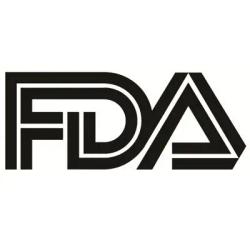
OR WAIT null SECS
Phentolamine Ophthalmic Solution for Low Mesopic Vision, With Jay Pepose, MD, PhD
Trial data reveal phentolamine ophthalmic solution's potential to treat night vision disturbances post-keratorefractive surgery, addressing a critical unmet need.
At the 2025 American Society of Cataract and Refractive Surgery (ASCRS) Annual Meeting, Jay Pepose, MD, PhD, founder and active medical director of the Pepose Vision Institute, presented results from two Phase 3 randomized, placebo-controlled trials evaluating 0.75% phentolamine ophthalmic solution in patients experiencing night vision disturbances after keratorefractive surgery.
These disturbances, including glare, halos, and starbursts, often stem from enlarged pupils unmasking corneal irregularities under low-light conditions—a longstanding unmet clinical need with no approved treatments.
“We see that this is an unmet need, and we're trying to develop what could be the first drug for the treatment of patients with reduced mesopic vision and photic phenomenon following keratoac surgery,” Pepose told HCPLive.
In the first Phase 3 trial (LYNX-1), 143 participants—including 25 post-keratorefractive surgery—were randomized to phentolamine ophthalmic solution or placebo for 14 nights. The primary endpoint was a ≥3-line improvement in mesopic low-contrast visual acuity (mLCVA). By Day 8, 13% of phentolamine-treated patients achieved this improvement, compared with 3% in the placebo group (P < 0.05).
Further analysis showed this improvement in phentolamine-treated participants grew to 21% versus 3% (P <0.01) by Day 15. Among keratorefractive patients, the trend was more pronounced: 29% vs 9% at Day 8, and 21% vs 0% at Day 15.
Pepose emphasized phentolamine ophthalmic solution’s unique mechanism: it moderately constricts pupils by blocking α1 receptors on the dilator muscle, without acting on the ciliary body—avoiding the risks of retinal detachment associated with traditional miotics like pilocarpine.
A second Phase 3 trial (LYNX-2), focused exclusively on post-keratorefractive patients, has completed enrollment of 200 participants. The study, conducted under conditions of a Special Protocol Assessment (SPA), also received Fast Track designation from the US Food and Drug Administration (FDA) due to the high prevalence and impact of untreated night vision issues.
With topline results expected in mid-2025, Pepose highlighted masked data showing 71% of participants reported complaints of severe night driving disturbances on a questionnaire. If successful, phentolamine ophthalmic solution could become the first FDA-approved treatment for post-refractive surgery patients with reduced mesopic vision and disabling photic symptoms.
“The LYNX-2 study is fully enrolled and and we're expecting topline results mid-2025, and then, depending on the outcome, we will be doing a second Phase 3 registration trial,” Pepose told HCPLive. “Hopefully, we'll be able to offer something for our patients who have no label, drug options.”
Pepose reports a relevant disclosure with Opus Genetics.


